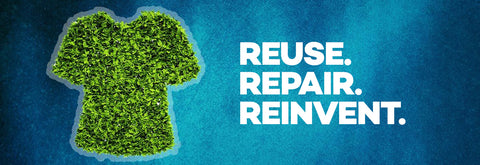In the era of climate change, recycling is a recurring term. While most human activities leave a severe environmental impact, recycling products reduces it significantly.

It’s the last of the 3R’s of sustainability- Reduce, Reuse, Recycle. But it’s also the most misunderstood. Contrary to popular perception, plastic and similar non-biodegradables are far from the only things that can be recycled.
The aim of being sustainable is to ensure that humans and nature lead a harmonious coexistence. Recycling is the easiest step that most people can take towards saving the planet.
It’s time to dispel the myths surrounding it and gain a better understanding of how recycling works, its impact on the environment, and how recycling can help you practice being sustainable.
What is Recycling?
The first law of thermodynamics states- energy can be used and reused, but can never be destroyed. Recycling products is a natural extension of that law in our day to day life.
Simply put, recycling is the process of using materials that have been used before. It includes the processing of rubbish and waste materials to make something new. The end product can then be used as raw material to create a new product. It can also be transformed directly into a new product.
Some common examples of recyclable materials in everyday life include:

Recycling greatly benefits the environment since it doesn’t require you to harvest natural resources. This reduces the rate at which resources are used, thereby cutting down on the environmental footprint.
Bonus Tip: Why Sustainable Fashion Matters?
Why Is Recycling Important?
Recycling is the easiest way to start being sustainable. In case you’re still not convinced of the importance of recycling products, here are a few reasons that will influence your decision otherwise.
Increasing waste: As the global population increases, so do consumption levels. This leads to large amounts of waste, much of which is non-biodegradable
Environmental damage: Chemicals, toxins and greenhouse gases released during the manufacturing process pollute the soil and air
Deforestation: There is no denying the fact that deforestation rates have increased, accentuating the effects of climate change and global warming

Energy loss: Huge amounts of energy are required to make new products from raw materials. Recycling consumes lesser energy while preserving natural resources
Economy-friendly: Recycling reduces the financial burden on economies by relying more on used products. It’s much more cost-effective than making products from scratch

Preserves natural resources: Recycling products help save natural resources for the future while searching for alternative sources of renewable energy
Recommended Reading: Fashion and Its Impact on the Environment
How does Recycling lead to Environmental Sustainability?

Recycling was initially embraced because it doesn’t rely much on the environment for resources. However, it offers more benefits than that. These are some ways in which recycling leads to environmental sustainability.
- By reducing the amounts of atmospheric carbon, recycling helps to protect and sustain the biosphere
- Recycling wood and paper can immensely reduce deforestation rates, improving air and soil quality
- Recycling plastics reduces water and land pollution, preserving aquatic species currently at risk due to plastic pollution
- Recycling can strengthen the economy in the long run, ensuring future generations can reap the benefits
- Recycling is the easiest way to spread awareness about the global impact of climate change and bring societies together
Also Read: How NorthMist uses Recycled Packaging
Recycling and Society Today
The encouraging news is that recycling is now accepted as a necessary step in environmental protection. It’s the first step the average person can take in their commitment to being sustainable.
That said, today’s recycling efforts are inadequate. Environmental protection efforts around the world remain consigned to campaign promises and boardrooms. Despite the UN’s warning to reduce global emissions, the world is still struggling to catch up to its climate commitments.

That said, it’s not all too bleak. Younger generations are fighting to protest against their governments’ inaction towards climate change. While big industries and factories are responsible for much of today’s situation, the average user also has much to do to reduce environmental impact.
Recycling is the first step one can take to start being sustainable. It’s easy to follow through with and reduces the average individual’s environmental impact. Contrary to popular belief, recycled products also do not compromise on quality.
Recommended Reading: How Sustainable is Your Product?
It’s absolutely necessary to increase public awareness of the benefits of recycling further. People also need to be better informed of the harm they cause by not factoring the environmental impact of their products.
If you’re wondering whether this means you need to sacrifice comfort and style for sustainability, the answer’s a resounding no!
Here at NorthMist, we use the purest, organic cotton for our fabrics. The result? Apparel that is manufactured with the least possible environmental impact.

To learn more about our products, check out our collection today!
Stay updated. Subscribe to our blogs and get daily updates on sustainable topics.






